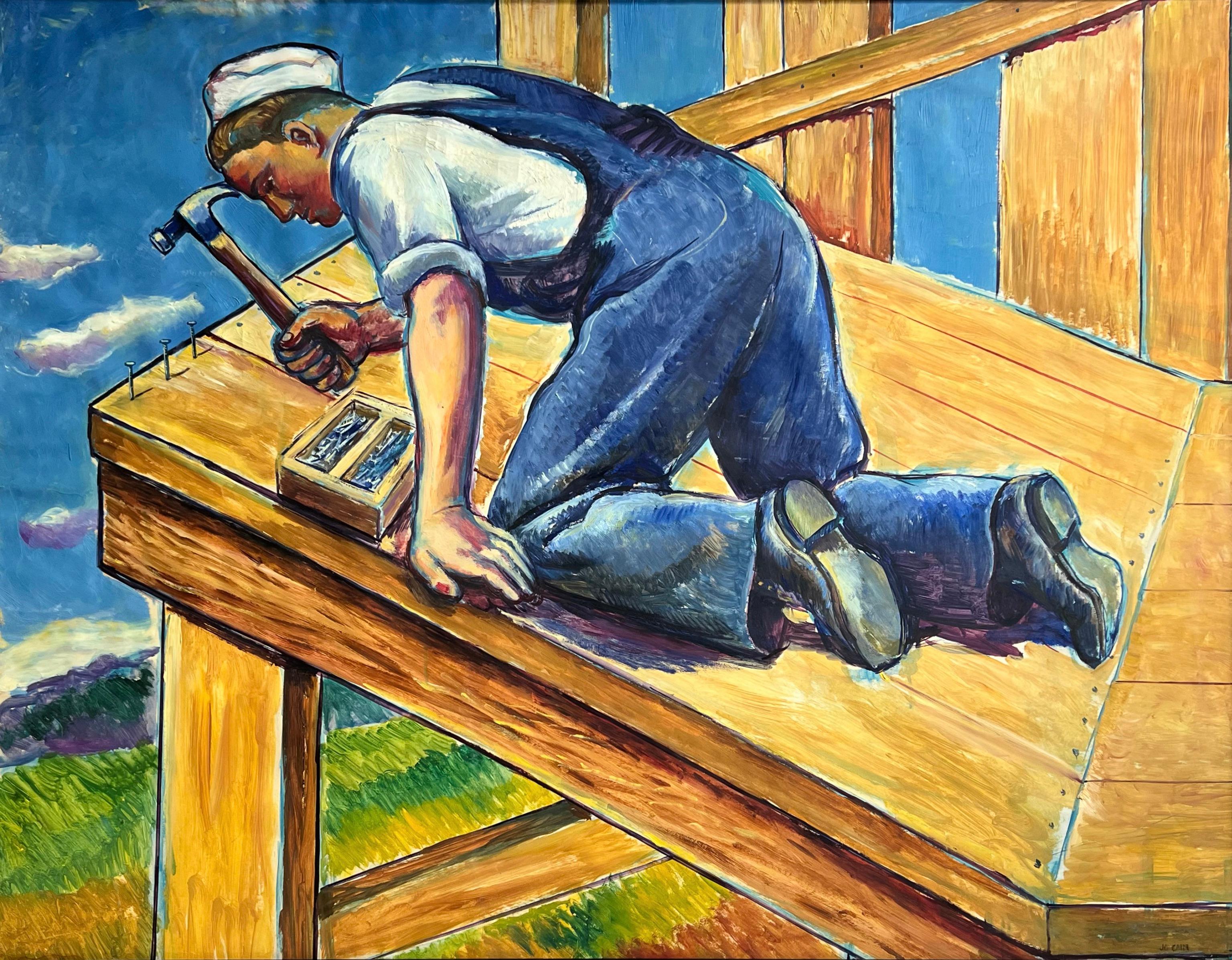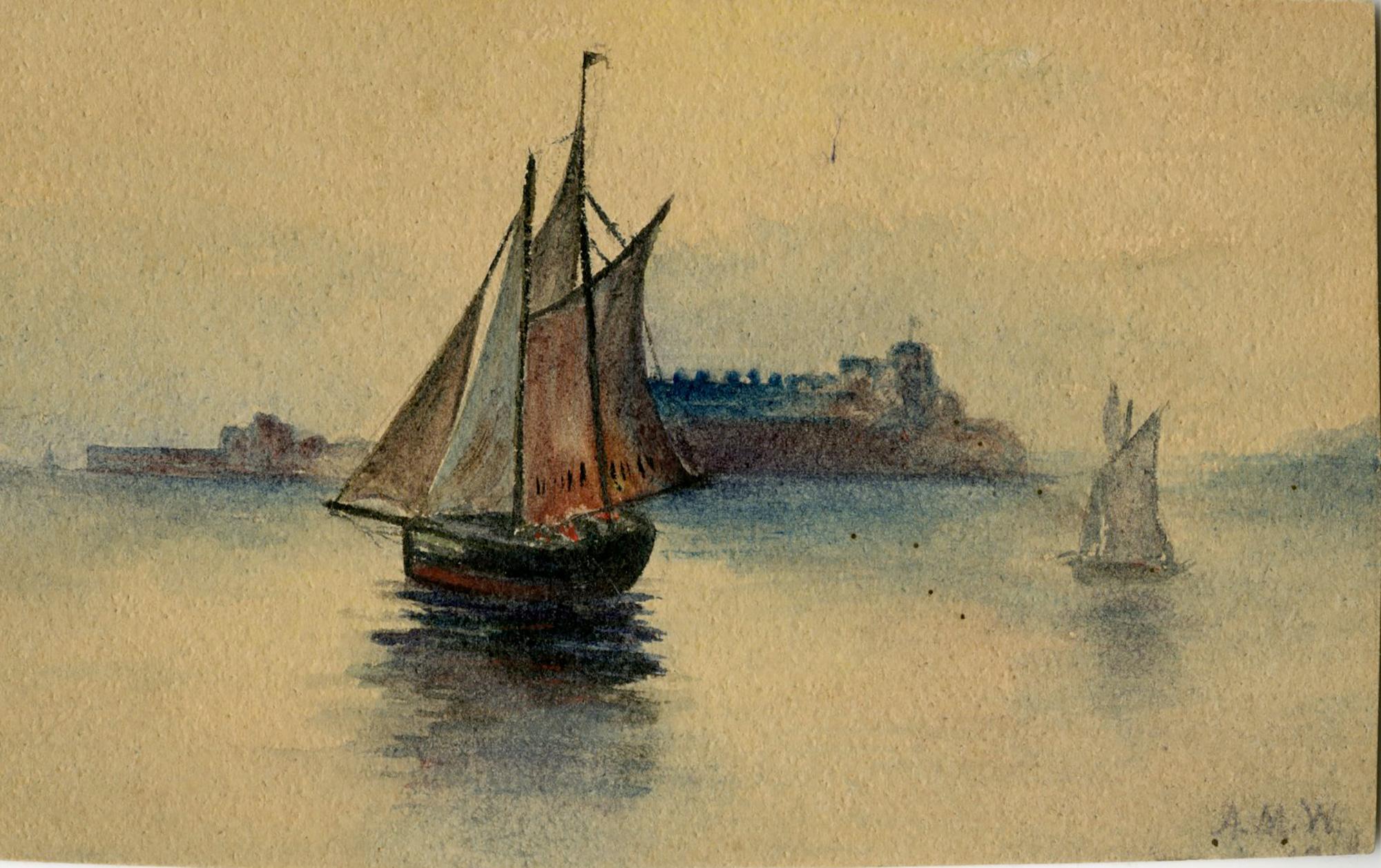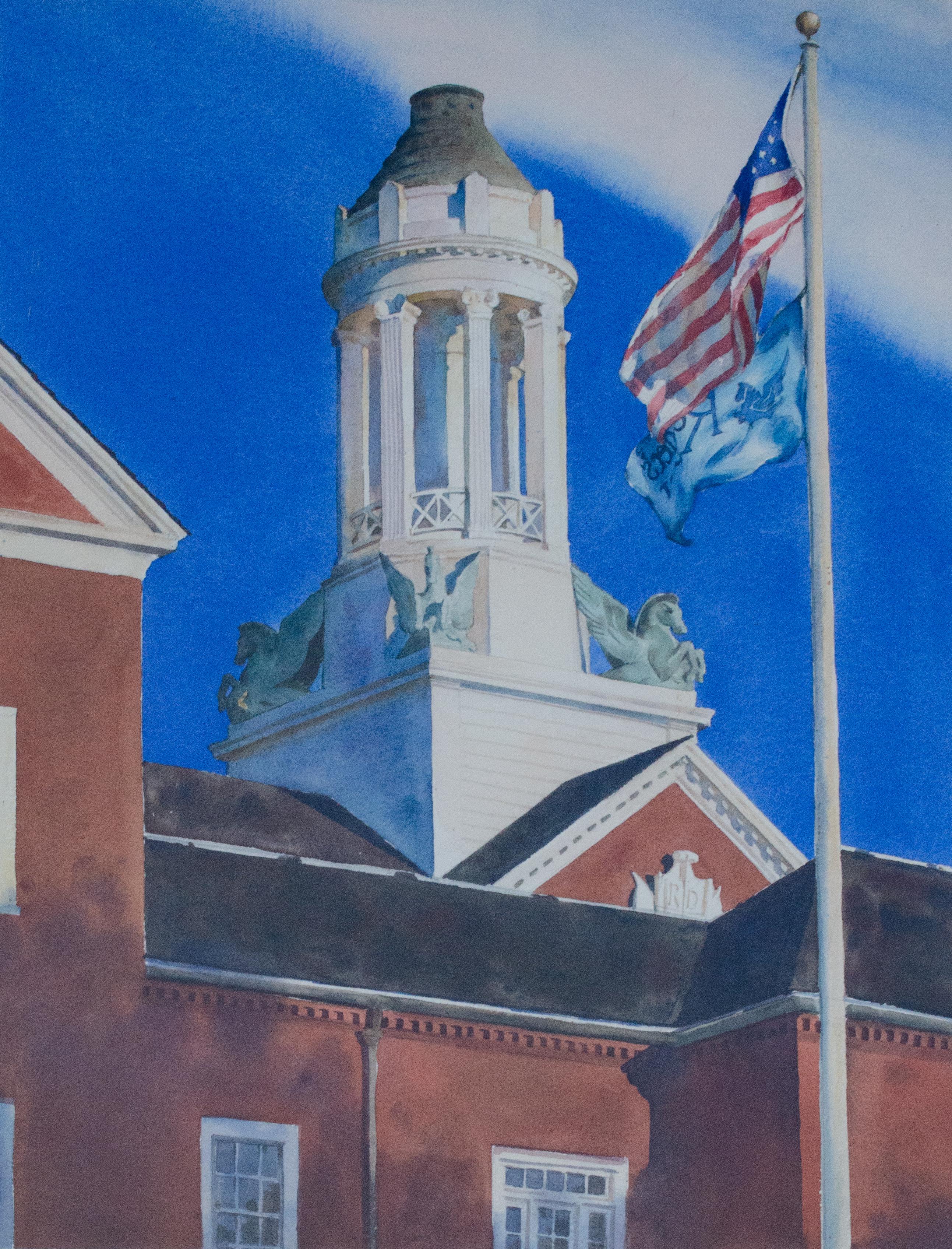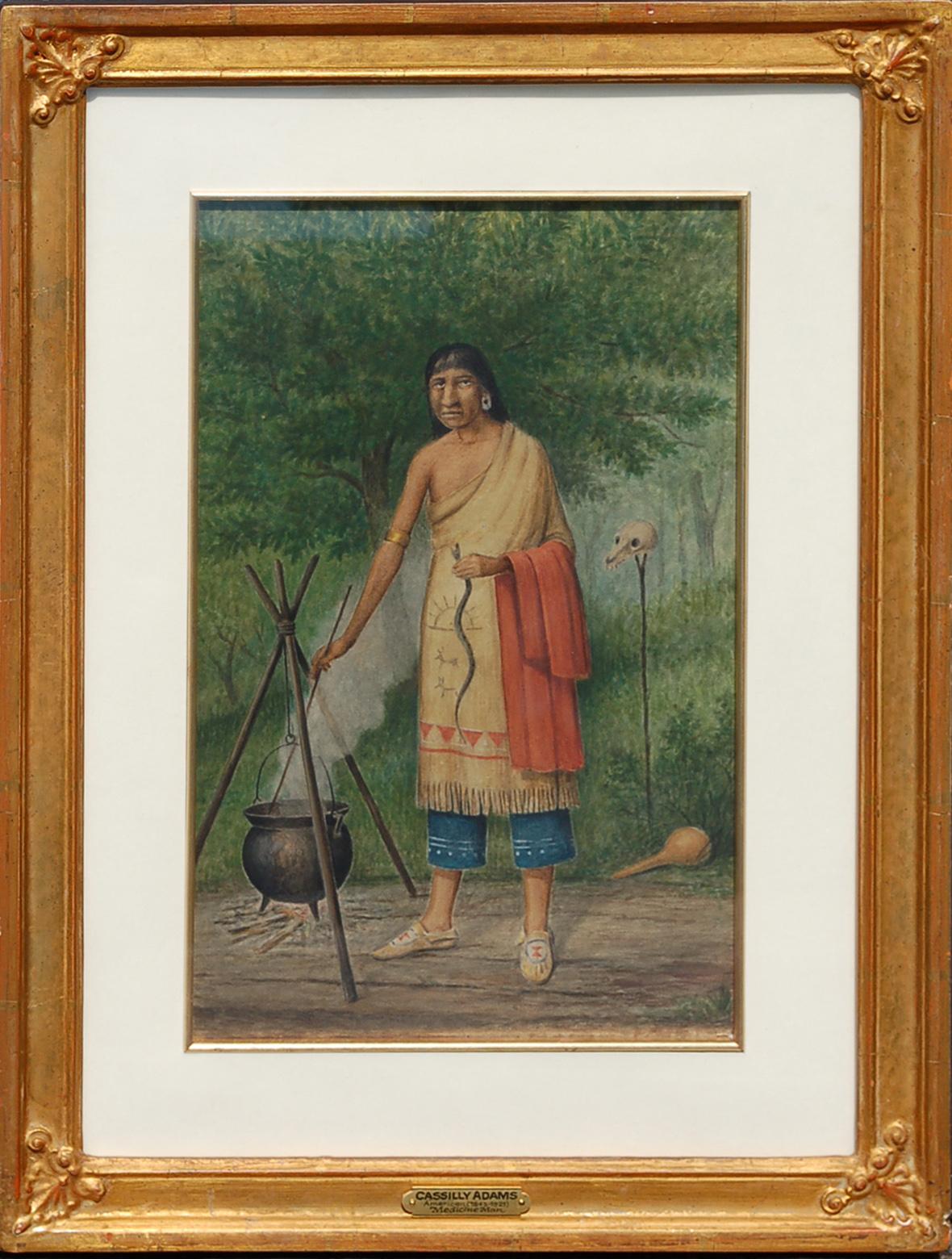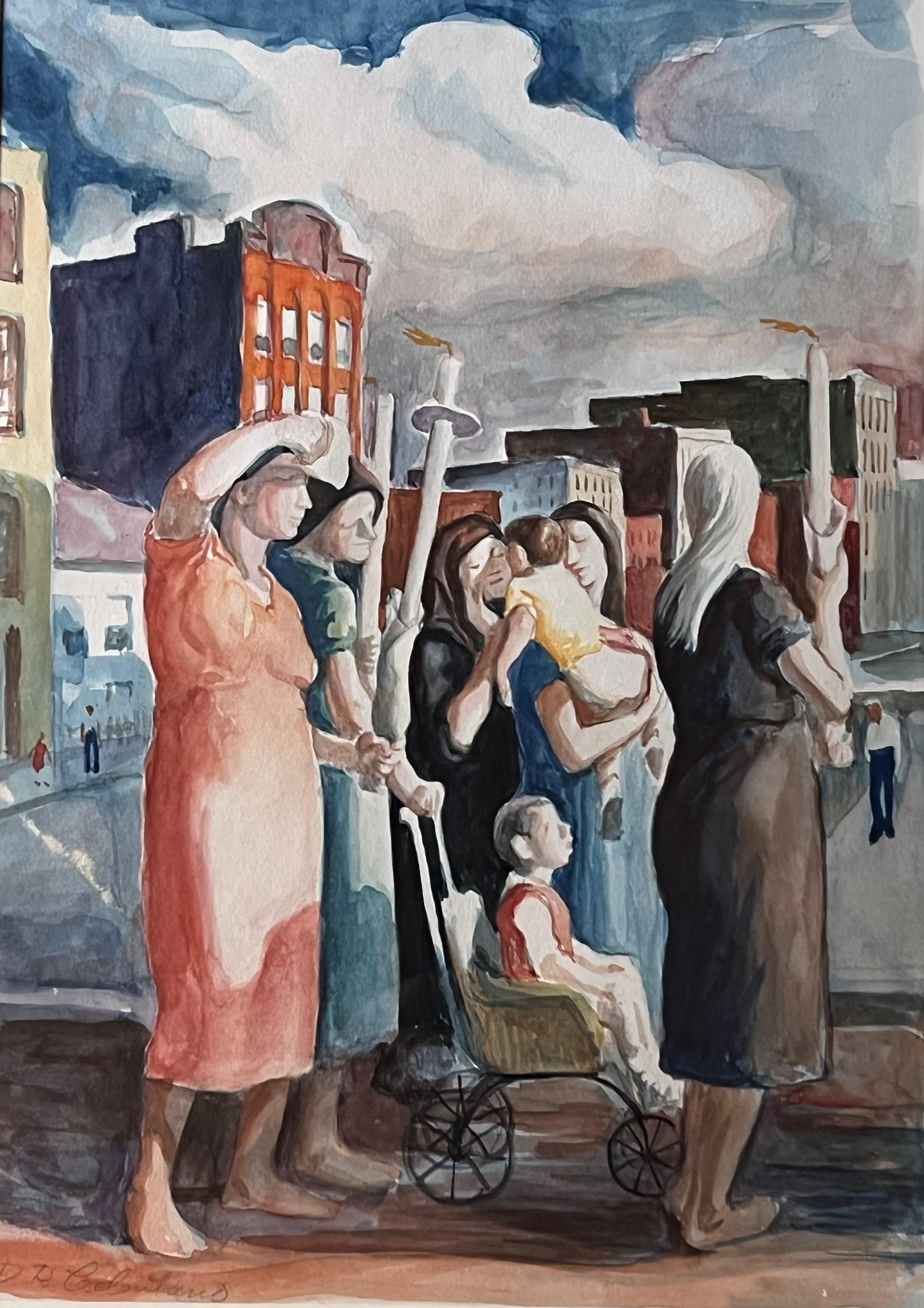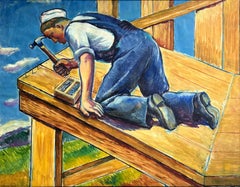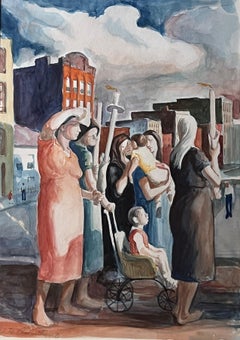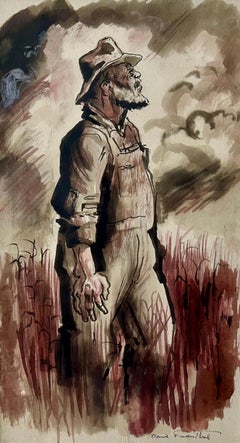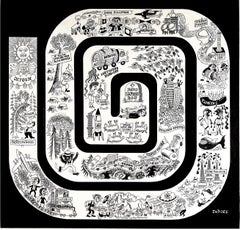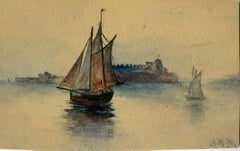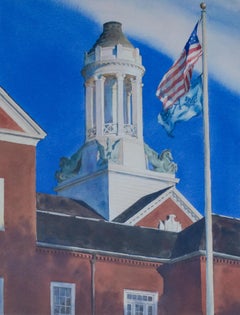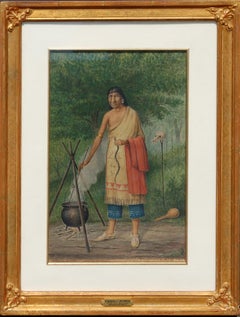Items Similar to Man Working Mid 20th Century American Scene Social Realism Industrial WPA Modern
Want more images or videos?
Request additional images or videos from the seller
1 of 8
Jo CainMan Working Mid 20th Century American Scene Social Realism Industrial WPA Modernc. 1930s
c. 1930s
About the Item
Man Working Mid 20th Century American Scene Social Realism Industrial WPA Modern
Jo Cain (1904 - 2003)
Telephone Pole Worker
38 1/4 x 18 1/2 inches
Oil on paper c. 1930s
Signed lower right
48 x 28 inches framed
Our gallery is pleased to present the exhibition, "Jo Cain: Echoes of an Era," a tribute to the enduring legacy of Joseph Lambert Cain and a celebration of his art that transcends time and remains relevant today. The exhibition features mural studies, works on paper and paintings from the 1930s and 40s, all are available on 1stDibs.
BIO
JOSEPH LAMBERT CAIN (1904–2003)
A painter, muralist, and art educator, Joseph Cain's work was consistently infused by the color and vibrancy of his native New Orleans, even as he pursued a career that took him far from home. Beginning at the age of sixteen, his educational journey led him first to the Art Institute of Chicago and then to the Art Students League in New York, where he was instructed by Kenneth Hayes Miller, Kimon Nicolaides and Vaclav Vytlacil. He later studied under the Abstract Expressionist Hans Hoffman. A 1929 Carnegie Fellowship funded a year's enrollment at the Sorbonne in Paris and travel throughout Europe; Cain also received multiple Tiffany Foundation Fellowships.
Using thickly applied paint, layered color planes, and multiple perspectives, Cain created paintings, including streetscapes, marine scenes, and landscapes, which were sometimes categorized as "decorative expressionism" beginning in the late 1930s.
In 1932, Cain's entry to the First Biennial Exhibition of Contemporary American Painting at the Whitney Museum of American Art hung in the exhibition's entry way; other works were shown at such prestigious venues as the Museum of Modern Art, American Art, Pennsylvania Academy of the Fine Arts, National Academy of Design, and Carnegie Institute.
He also executed a monumental mural at New York State Training School where he was employed as a teacher. While living in New York during this period, Cain was an integral member of a contemporary art collective known as "The Group," whose participants included Milton Avery, George Biddle, Robert Gwathmey, Marsden Hartley, John Marin, and many other important modernists.
Jo’s work evolved continuously. Moving from realism in the ‘20’s, he developed a highly personal, cubism based, abstract style similar in spirit to that of Stuart Davis and clearly influenced by Leger, Matisse and Picasso. In 1944, Cain joined the faculty at the University of Rhode Island, establishing and chairing the art department for over two decades. He continued creating art until his death.
- Creator:Jo Cain (1904)
- Creation Year:c. 1930s
- Dimensions:Height: 48 in (121.92 cm)Width: 28 in (71.12 cm)Depth: 2 in (5.08 cm)
- Medium:
- Movement & Style:
- Period:
- Condition:
- Gallery Location:New York, NY
- Reference Number:1stDibs: LU1156213256292
About the Seller
5.0
Platinum Seller
Premium sellers with a 4.7+ rating and 24-hour response times
Established in 2008
1stDibs seller since 2019
189 sales on 1stDibs
Typical response time: <1 hour
- ShippingRetrieving quote...Shipping from: Pawling, NY
- Return Policy
Authenticity Guarantee
In the unlikely event there’s an issue with an item’s authenticity, contact us within 1 year for a full refund. DetailsMoney-Back Guarantee
If your item is not as described, is damaged in transit, or does not arrive, contact us within 7 days for a full refund. Details24-Hour Cancellation
You have a 24-hour grace period in which to reconsider your purchase, with no questions asked.Vetted Professional Sellers
Our world-class sellers must adhere to strict standards for service and quality, maintaining the integrity of our listings.Price-Match Guarantee
If you find that a seller listed the same item for a lower price elsewhere, we’ll match it.Trusted Global Delivery
Our best-in-class carrier network provides specialized shipping options worldwide, including custom delivery.More From This Seller
View AllIndustrial Man Working Mid 20th Century American Scene Social Realism Modern WPA
By Jo Cain
Located in New York, NY
Industrial Man Working Mid 20th Century American Scene Social Realism Modern WPA
Jo Cain (1904 - 2003)
Hammering Nails
39 x 50 ½ inches
Gouache on paper c. 19...
Category
1930s American Realist Figurative Drawings and Watercolors
Materials
Paper, Gouache
"Going to the Festival" WPA Ashcan 20th Century American Scene Modern Realism
By Daniel Ralph Celentano
Located in New York, NY
"Going to the Festival" WPA Ashcan 20th Century American Scene Modern Realism
Daniel Celentano (1902 - 1980) "Going to the Festival," 14 1/2 x 10 1/2. Watercolor on paper, c. 1930s....
Category
1930s American Realist Figurative Drawings and Watercolors
Materials
Paper, Watercolor
TOBACCO ROAD Mid 20th Century Realism 1940 Drawing from the Novel WPA Literary 3
By David Fredenthal
Located in New York, NY
TOBACCO ROAD Mid 20th Century Realism 1940 Drawing from the Novel WPA Literary 3
10 1/2 x 6 (sight), Signed David Fredenthal lower right. Framed by Lowy.
Offered here is one of several original drawings by WPA artist David Fredenthal that were first published in the 1940 illustrated edition of the novel TOBACCO ROAD by Erskine Caldwell.
Background on the Drawing
Erskine Caldwell remarked, on seeing the work of David Fredenthal, 26-year-old painter: "That boy could draw my Tobacco Road people." A casual comment, it was enormously productive.
The young painter was just finishing a two-year Guggenhcim Fellowship, preceded by a year's study in Paris, two one-man shows at New York's Downtown Gallery, and a fellowship at the Cranbrook Academy near Detroit. He was out in Colorado Springs when he heard what Caldwell had said about him.
Fredenthal hadn't read Tobacco Road. He had not even seen the play - now breaking all records in its seventh year on Broadway. But he swapped a portrait for a second-hand Ford and headed East.
In New York he learned that Dnell, Sloan & Pearce were bringing out a deluxe edition of Tobacco Road. But he had no entrée to the publishers, and Caldwell, to his disappointment, was out of town. So he drove on to Georgia to have a look at the Tobacco Road people.
He found Dr. I. C. Caldwell, the author's father, in Wrens, Ga., going on his ministerial rounds among people like the Lesters. Fredenthal got a room from a couple who ran a 1-pump filling station...
Category
1930s American Realist Figurative Drawings and Watercolors
Materials
Paper, Ink, Watercolor
Bridge Painter WPA American Modernism Mid 20th-Century Realism Industrial Worker
By Louis Wolchonok
Located in New York, NY
Bridge Painter WPA American Modernism Mid 20th-Century Realism Industrial Worker. Sight size: 18 x 23 1/4 inches. Estate stamped verso.
This drawing is the study for a large oil we ...
Category
1930s American Realist Figurative Drawings and Watercolors
Materials
Watercolor, Paper
TOBACCO ROAD Mid 20th Century Realism 1940 Drawing from the Novel WPA Literary 2
By David Fredenthal
Located in New York, NY
TOBACCO ROAD Mid 20th Century Realism 1940 Drawing from the Novel WPA Literary 2
10 1/2 x 6 (sight), Signed David Fredenthal lower right. Framed by Lowy....
Category
1930s American Realist Figurative Drawings and Watercolors
Materials
Paper, Ink, Watercolor
Answering the Door Early 20th Century w/c Fauvism Social Realism American Scene
By Stuart Davis
Located in New York, NY
Answering the Door Early 20th Century w/c Fauvism Social Realism American Scene
Note: We have three similar in style works from 1911 available now on 1stDibs. All are framed identi...
Category
1910s American Realist Figurative Drawings and Watercolors
Materials
Paper, Watercolor
You May Also Like
Environmental Prognostication Coil Narrative "Homo Sapiens R.I.P."
Located in Miami, FL
"They paved paradise and put up a parking lot," Joni Mitchell said. - - Created in 1969, at the dawn of the American environmental movement, artist Richard Erdoes draws a sequential narrative in the form of a coil. From inception to destruction, it illustrates a list of things that humans are doing to destroy the world we live in. The work was commissioned for school-age humans and executed in a whimsically comic way. Yet the underlying narrative is sophisticated and foreshadows a world that could be on the brink of ecological disaster.
Graphically and conceptually, this work exhibits an endless amount of creativity and Erdoes cartoony style is one to fall in love with.
Signed lower right. Unframed 12.4 inches Width: 12.85 inches Height is the live area. Board is 16x22 inches.
Richard Erdoes (Hungarian Erdős, German Erdös; July 7, 1912 – July 16, 2008) was an American artist, photographer, illustrator and author.
Early life
Erdoes was born in Frankfurt,to Maria Josefa Schrom on July 7, 1912. His father, Richárd Erdős Sr., was a Jewish Hungarian opera singer who had died a few weeks earlier in Budapest on June 9, 1912.After his birth, his mother lived with her sister, the Viennese actress Leopoldine ("Poldi") Sangora,He described himself as "equal parts Austrian, Hungarian and German, as well as equal parts Catholic, Protestant and Jew..."[4]
Career
He was a student at the Berlin Academy of Art in 1933, when Adolf Hitler came to power. He was involved in a small underground paper where he published anti-Hitler political cartoons which attracted the attention of the Nazi regime. He fled Germany with a price on his head. Back in Vienna, he continued his training at the Kunstgewerbeschule, now the University of Applied Arts, Vienna.[5] He also wrote and illustrated children's books and worked as a caricaturist for Tag and Stunde, anti-Nazi newspapers. After the Anschluss of Austria in 1938 he fled again, first to Paris, where he studied at the Academie de la Grande Chaumiere, and then London, England before journeying to the United States. He married his first wife, fellow artist Elsie Schulhof (d. xxxx) in London, shortly before their arrival in New York City.
In New York City, Erdoes enjoyed a long career as a commercial artist, and was known for his highly detailed, whimsical drawings. He created illustrations for such magazines as Stage, Fortune, Pageant, Gourmet, Harper's Bazaar, Sports Illustrated, The New York Times, Time, National Geographic and Life Magazine, where he met his second wife, Jean Sternbergh (d. 1995) who was an art director there. The couple married in 1951 and had three children.[6] Erdoes also illustrated many children's books.
An assignment for Life in 1967 took Erdoes to the Pine Ridge Indian Reservation for the first time, and marked the beginning of the work for which he would be best known. Erdoes was fascinated by Native American culture, outraged at the conditions on the reservation and deeply moved by the Civil Rights Movement that was raging at the time. He wrote histories, collections of Native American stories...
Category
1960s American Realist Landscape Drawings and Watercolors
Materials
Ink, Gouache, Illustration Board
Schooners along the Hudson, West Point Academy in the distance.
Located in Middletown, NY
A serene Hudson River scene by a student of Louis Comfort Tiffany.
Anna May Walling was born in 1881, a native of Goshen, New York. She was a graduate of the Blair Academy, and Prat...
Category
Early 20th Century American Realist Landscape Drawings and Watercolors
Materials
Watercolor, Handmade Paper
David Dewey Watercolor of Reader's Digest Headquarters
By David Dewey
Located in New York, NY
David Dewey (B. 1946)
Reader's Digest Headquarters, 1996
Watercolor on paper
Sight: 24 x 18 1/2 in.
Framed: 36 x 29 3/4 x 1 in.
Living on the Maine coast, David Dewey is a watercolo...
Category
1990s American Realist Landscape Drawings and Watercolors
Materials
Paper, Watercolor
Medicine Man
By Cassilly Adams
Located in Missouri, MO
Cassilly Adams (American 1843-1921)
"Medicine Man" c. 1860s
Watercolor on Paper
Unsigned
Provenance: Questroyal Gallery, NYC
Site Size: approx. 14.5 x 8....
Category
Mid-19th Century American Realist Figurative Drawings and Watercolors
Materials
Paper, Watercolor
Price Upon Request
Large Watercolour of Pleasure Boats Moored on the River in Florida by USA Artist
Located in Preston, GB
Large Watercolour of Pleasure Boats Moored on the River in Florida by USA Artist David Coolidge AWS (American 20th-21st Century)
Art measures 40 x 30 i...
Category
Late 20th Century American Realist Landscape Drawings and Watercolors
Materials
Paper, Watercolor
Mid Century Mazatlan Beach Catamaran Figurative Landscape Watercolor
By William A. Corbett
Located in Soquel, CA
Vibrant figurative seascape of a beach in Mazatlan, Mexico with several figures and a catamaran reflecting beautifully in the shallow water by William A. Corbett (American. 1914-1960). Titled "Beach- Mazatlan" on verso. Signed "William Corbett" in lower left corner. Presented in a simple wood frame, with a double mat of off-white silk and royal blue with plexiglass. Image size: 22”H x 14.75”L
William A. Corbett began drawing at an early age. He constructed signs and displays for theaters and nightclubs around Pittsburg. He studied art with Vincent Nesbert at the Pittsburg Art Institute and with Robert Gwathmoy, Roy Hilton, and Robert Laper at the Carnegie Institute of Technology. He also studied painting and sculpture at the Louisville Art Center. Corbett was in the Army Engineers at Fort Knox, Kentucky where he studied, practiced, and had exhibits with army artists there from 1941-1943. He was very much interested in materials and technique, content and style in painting. His favorite Artists were El Greco, Leonardo, Rembrandt, Renoir, Burchfield, and Andrew Wyeth, Jr. He studied two years at Boston museum School with Karl Zerbe, Daivid Aronson and others. He later designed and did art work for General Outdoor Advertising Co. In 1943, he married Ruth Osborne of Louisville and they had one son, Michael. In 1951 he moved to Fort Lauderdale, Florida with his family.
Exhibitions:
Army Art Show--- 1st Prize in Landscape, 1942
Kentucky & southern Indiana Exhibition-- Honorable
mentions for Fisherman's Curse 1949, Don Q...
Category
1960s American Realist Landscape Drawings and Watercolors
Materials
Watercolor, Paper
Recently Viewed
View AllMore Ways To Browse
Scenes From Vintage America
Paintings From The 1930s
American Realism Art
American Realism
American Industrial Design
Native American Works
20th Century Realism Art
Painting Scene Social
Vintage Art Collective
Modern Industrial Paintings
18c American
Social Realism
20th Century Modern Realism
Social Realism Painting
20th Century American Realism
1930s Mural
Realism Painting Mid Century
Mid Century Modern Pole
